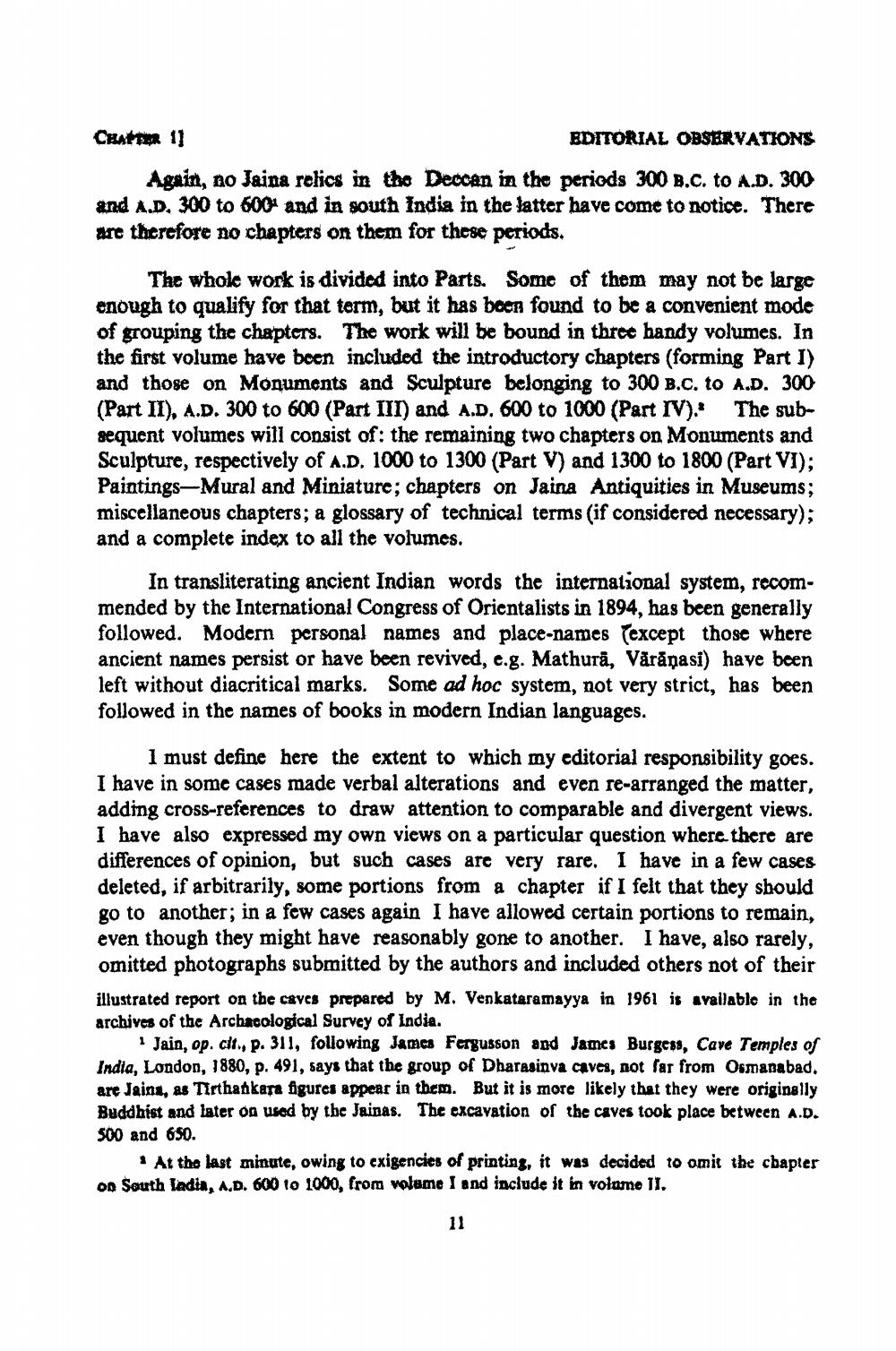________________
CHAPTER 11
EDITORIAL OBSERVATIONS
Again, no Jaina relics in the Deccan in the periods 300 B.C. to A.D. 300 and A.D. 300 to 600 and in south India in the latter have come to notice. There are therefore no chapters on them for these periods.
The whole work is divided into Parts. Some of them may not be large enough to qualify for that term, but it has been found to be a convenient mode of grouping the chapters. The work will be bound in three handy volumes. In the first volume have been included the introductory chapters (forming Part I) and those on Monuments and Sculpture belonging to 300 B.C. to A.D. 300 (Part II), A.D. 300 to 600 (Part III) and A.D. 600 to 1000 (Part IV).' The subsequent volumes will consist of: the remaining two chapters on Monuments and Sculpture, respectively of A.D. 1000 to 1300 (Part V) and 1300 to 1800 (Part VI); Paintings-Mural and Miniature; chapters on Jaina Antiquities in Museums; miscellaneous chapters; a glossary of technical terms (if considered necessary); and a complete index to all the volumes.
In transliterating ancient Indian words the international system, recommended by the International Congress of Orientalists in 1894, has been generally followed. Modern personal names and place-names (except those where ancient names persist or have been revived, e.g. Mathura, Vārānasi) have been left without diacritical marks. Some ad hoc system, not very strict, has been followed in the names of books in modern Indian languages.
1 must define here the extent to which my editorial responsibility goes. I have in some cases made verbal alterations and even re-arranged the matter, adding cross-references to draw attention to comparable and divergent views. I have also expressed my own views on a particular question where there are differences of opinion, but such cases are very rare. I have in a few cases deleted, if arbitrarily, some portions from a chapter if I felt that they should go to another; in a few cases again I have allowed certain portions to remain, even though they might have reasonably gone to another. I have, also rarely, omitted photographs submitted by the authors and included others not of their illustrated report on the caves prepared by M. Venkataramayya in 1961 is available in the archives of the Archaeological Survey of India.
1 Jain, op. cit., p. 311, following James Fergusson and James Burgess, Cave Temples of India, London, 1880, p. 491, says that the group of Dharasinva caves, not far from Osmanabad. are Jaina, as Tirthankara figures appear in them. But it is more likely that they were originally Buddhist and later on used by the Jainas. The excavation of the caves took place between A.D. 500 and 650.
1 At the last minute, owing to exigencies of printing, it was decided to omit the chapter on South India, A.D. 600 to 1000, from volume I and include it in volume II.
11




